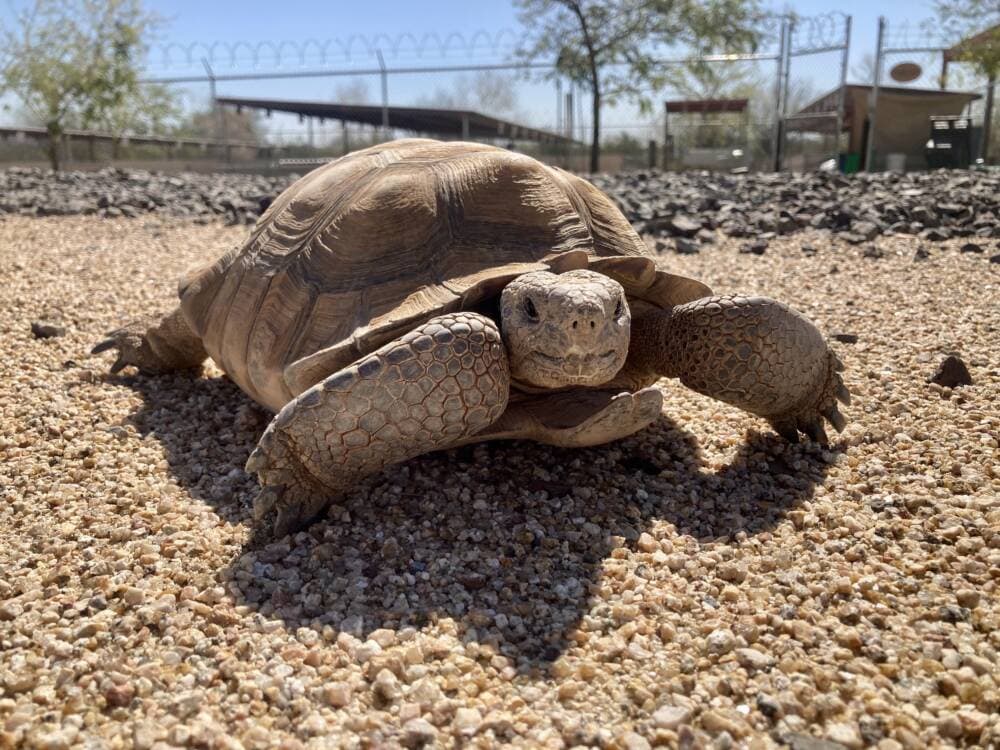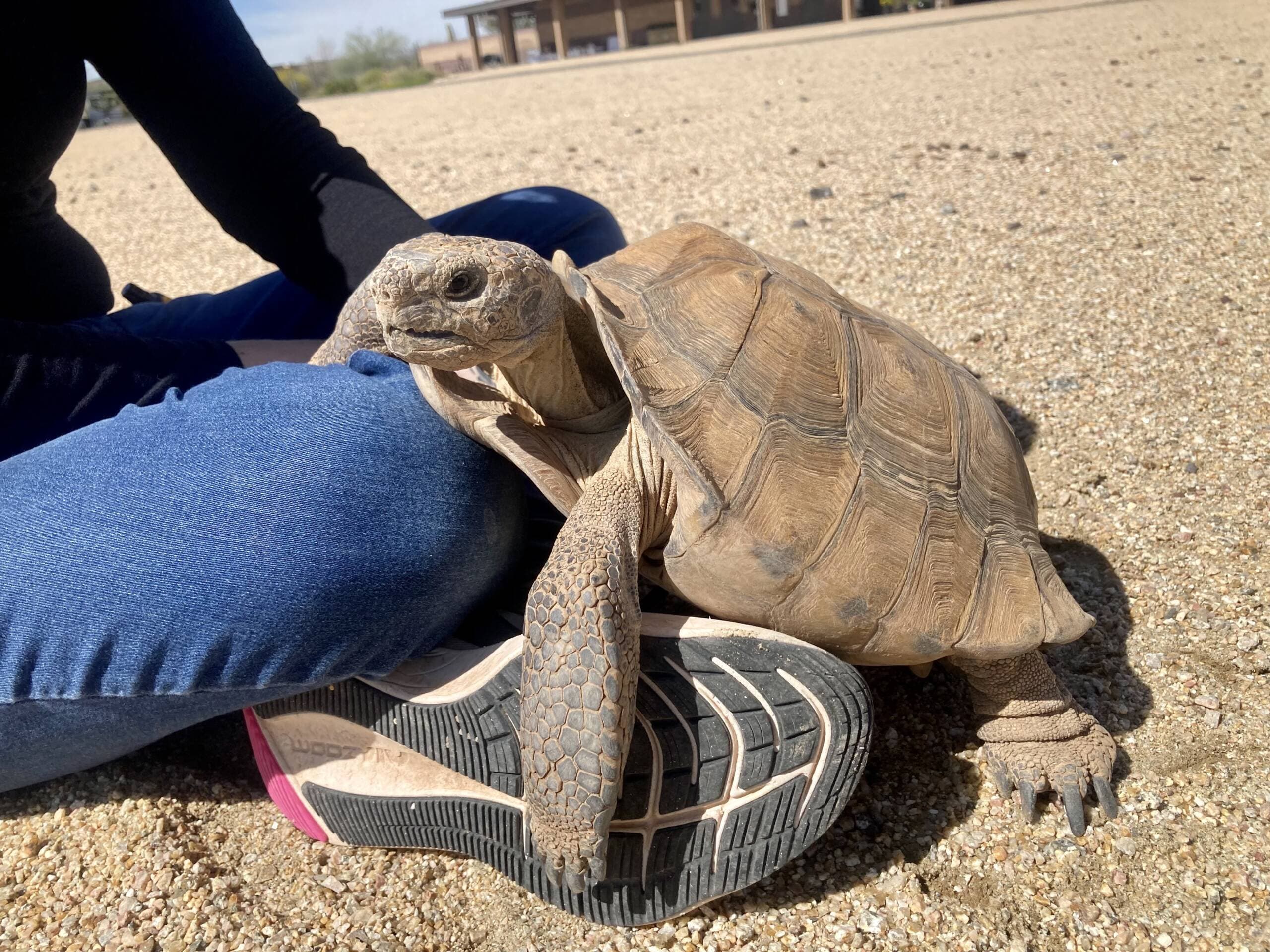Advertisement
Stick your neck out and adopt a desert tortoise

What has four scaly legs and spends 90% of its life underground? It could be your new pet.
The Arizona Game and Fish Department’s desert tortoise adoption program began last week with more than 300 animals available for adoption. That’s more orphaned tortoises than it’s ever had at this point in the season, according to program manager Tegan Wolf.
“It's like having a tiny dinosaur in your backyard,” she said. “They’re very relaxed animals.”
Wolf says that people are illegally breeding Sonoran Desert tortoises in their backyards. Sometimes dozens of tortoises from a single home will end up at the Game and Fish Department’s headquarters in north Phoenix.
Every animal has a different personality, Wolf says. One 30-year-old tortoise named Thanos behaves more like a dog. He tries to climb in Wolf’s lap and has a reputation for “chasing” his adopted family around their yards. He’s been returned four times.
“He's just very sassy,” Wolf said. “We don't normally get tortoises that chase people or that are aggressive. It's very, very rare. That's why he's my favorite.”

Thanos may be cold blooded, but he's no killer. Desert tortoises spend most of their life in underground burrows to escape extreme heat in the summer and sub-freezing temperatures in the winter. The animals Wolf watches after are Sonoran Desert tortoises.
But in nearby California and Nevada, the Mojave Desert tortoise population is in drastic decline. It’s officially listed as a threatened species.
In Joshua Tree National Park, rangers say the population has fallen 90% since the 1980s. Human development has decimated their habitat; Our homes have destroyed theirs. Our roads have become black-ribbon death traps for the slow-motion torts.
Our trash also attracts an exploding population of ravens, which prey on young tortoises. Their shells are not hard enough to protect them from the birds’ beaks until they’ve reached 10 years old, according to the National Park Service.
The population of Sonoran Desert tortoises is stable, however.
And in the last week of March, when the animals are finally active again after a long winter brumation, Wolf has about a dozen tortoises lined up to go home with new families. She hands an 8-year-female over to Michael Alexander.
The new family pet, named Torty, is the size of a salad plate and likely has a long life ahead of her.
The animals can live up to 80 years.
“Torty is going to be a multi-generation family member,” said Alexander. “Torty is going to outlive all of us.”
This segment aired on April 3, 2023.

